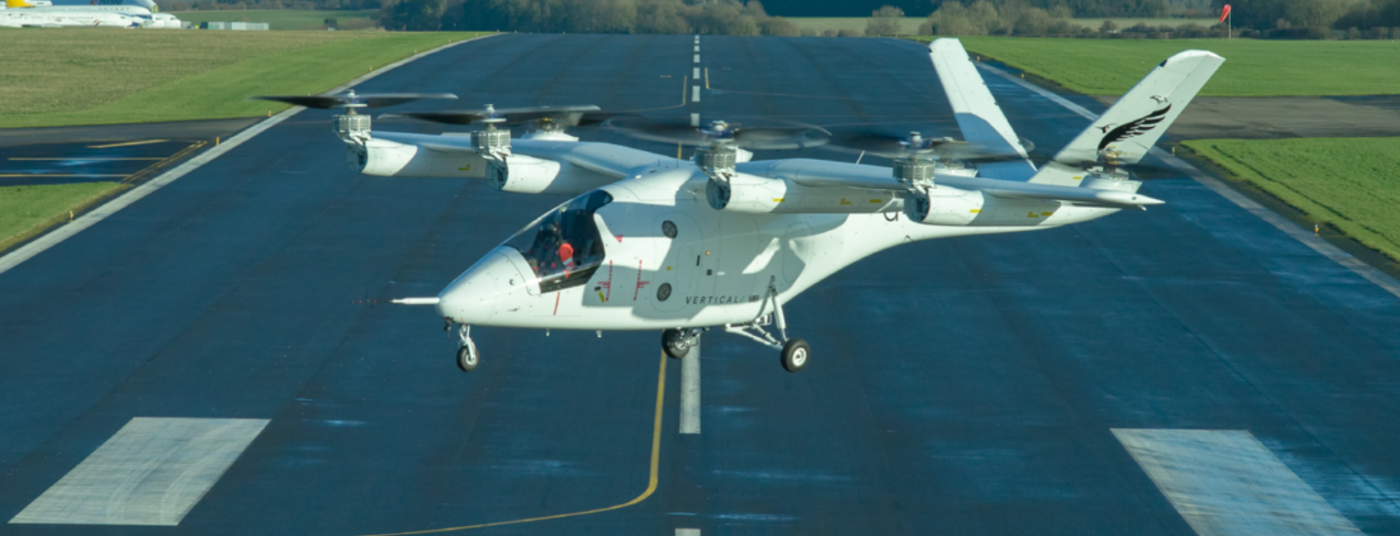|
Getting your Trinity Audio player ready...
|
Vertical completes Phase 2 of its piloted thrustborne testing with the VX4 prototype exceeding
expectations for stability and performance
- The company is now preparing for the next stage in its testing programme – piloted wingborne flight – a
world first for a full-scale tilt rotor eVTOL - Update comes as Vertical continues its strong start to the year – including securing $90m in its recent
upsized public offering
London, UK; New York, USA – 04/02/2025:
Vertical Aerospace (Vertical) [NYSE: EVTL], a global aerospace and technology company that is pioneering
electric aviation, has successfully completed the second stage of piloted thrustborne testing of its full
scale VX4 prototype.
The company is now preparing for a new chapter in its history, with the VX4 entering the penultimate
phase of flight testing: wingborne flight. This phase will mark a defining moment in the VX4’s development,
pushing beyond the limits of the secure airspace of Cotswold Airport’s airfield and into real-world
operating conditions for the first time.
During Phase 2, the aircraft completed over thirty piloted test flights. Flight tests included completing
successful hover and low speed flight manoeuvres, as well as executing handling and performance
procedures including roll, yaw, and spot-turns.
Engineers were able to collect hundreds of data points to determine the reliability of the aircraft systems,
as well as thrust levels, lift efficiency, and power-to-thrust ratio and control responsiveness. These
piloted prototype flights experienced no system failures and exceeded expectations for stability and
performance.
The news builds on Vertical’s strong start to 2025, following the appointment of Dómhnal Slattery as Chair
and the announcement of its upsized $90m underwritten public offering.
Stuart Simpson, CEO of Vertical Aerospace, said:
“This year has started with incredible momentum, and this phase of testing has given us invaluable insights into
our phenomenal aircraft. Each milestone brings us closer to changing how the world moves, and we are taking
these learnings forward as we continue advancing our piloted flight test programme. I’m incredibly excited to
be on the cusp of another historic moment as we prepare for our most advanced stage of testing yet.”
Simon Davies, Vertical’s Chief Test Pilot, who flew the VX4, said:
“This phase of testing allowed us to put the VX4 through key flight manoeuvres in real-world conditions,
giving us valuable insights into its reliability and responsiveness under more demanding scenarios. The aircraft
performed exceptionally, being just as stable and simple to fly as our simulations.”
“It’s incredible to see how far we’ve come—from the first tethered flights just months ago to now successfully
completing thrustborne testing. I’m looking forward to the months ahead as we push the flight envelope further
and take the next critical steps towards wingborne flight.”
To progress to wingborne flight, the next phase of the flight test programme, the UK Civil Aviation Authority
(CAA) will first need to expand Vertical’s Permit to Fly. Once approved, the VX4 will take off, fly, and land like a
conventional aircraft, with lift generated by its wings rather than its rotors. Transitioning from a tightly controlled
test environment to more dynamic, scalable operations is a major leap forward on the path to full certification
and commercial viability. Once the aircraft has completed wingborne flight, the aircraft will have, in effect,
completed a mini-certification process with this prototype.
While Vertical works with the CAA to expand its Permit to Fly it will continue to perform important system and
component testing as well as progressing the development of an identical full-scale prototype which will
accelerate the VX4’s flight test programme and demonstration capability.
Following wingborne testing, the VX4 will enter a final phase of transition testing to demonstrate its ability to
switch between vertical and forward flight modes.


